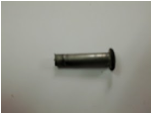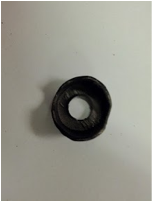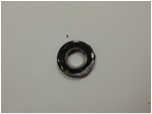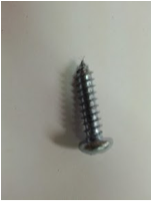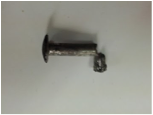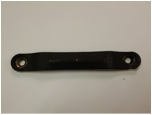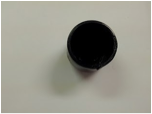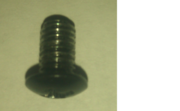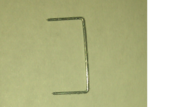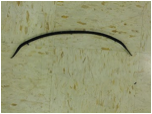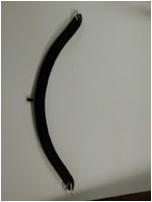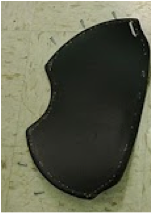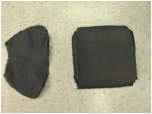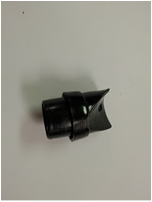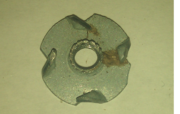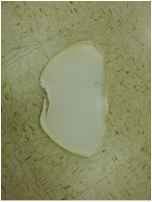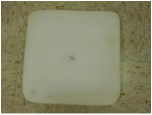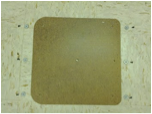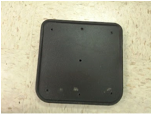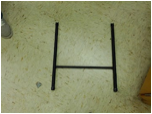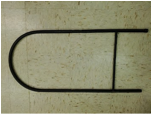Folding Desk Chair Innovation
From DDL Wiki
(→Design Documentation) |
(→Bill of Materials) |
||
| Line 217: | Line 217: | ||
| Drawn, cut, and bent | | Drawn, cut, and bent | ||
| Steel | | Steel | ||
| + | |- | ||
| + | | 22 | ||
| + | | Turntable | ||
| + | | 1 | ||
| + | | | ||
| + | | Attaches desk surface to table support and allows desk to rotate 90 degrees for folding. | ||
| + | | Purchased from McMaster-Carr, part # 1797K3 | ||
| + | | Steel | ||
| + | | | ||
| + | |- | ||
| + | | 23 | ||
| + | | Desk Arm | ||
| + | | 1 | ||
| + | | | ||
| + | | Attaches desk to chair and rotates between open and closed position. | ||
| + | | Bent pipe | ||
| + | | Steel | ||
| + | | | ||
| + | |- | ||
| + | | 24 | ||
| + | | Hinge Top | ||
| + | | 1 | ||
| + | | | ||
| + | | Allows table to open up for folding. | ||
| + | | Stamping and folding. | ||
| + | | Steel | ||
| + | | | ||
| + | |- | ||
| + | | 25 | ||
| + | | Hinge Bottom | ||
| + | | 1 | ||
| + | | | ||
| + | | Allows table to open up for folding. | ||
| + | | Stamping and folding. | ||
| + | | Steel | ||
| + | | | ||
| + | |- | ||
| + | | 26 | ||
| + | | Table Support | ||
| + | | 1 | ||
| + | | | ||
| + | | Attaches hinge to desk surface. | ||
| + | | Cutting. | ||
| + | | Aluminum | ||
| + | | | ||
| + | |- | ||
| + | | 27 | ||
| + | | Desk top | ||
| + | | 1 | ||
| + | | | ||
| + | | Serves as a desk surface. | ||
| + | | Injection Molding | ||
| + | | HDPE | ||
| + | | | ||
| + | |- | ||
| + | | 28 | ||
| + | | Links | ||
| + | | 2 | ||
| + | | | ||
| + | | Stops the desk arm at the appropriate angle. | ||
| + | | Cutting and stamping. | ||
| + | | Aluminum | ||
| + | | | ||
|} | |} | ||
Revision as of 00:50, 2 May 2012
Contents |
Executive Summary
Market Analysis
Design Documentation
Bill of Materials
House of Quality
Design Analysis
DFMA
Design for Manufacture and Assembly considerations were significant to the prototype and design analysis. As the DFMA implications are expanded to the large scale production regime, several conclusions become apparent. If implemented on a large scale, the folding desk chair would be composed of two major subassemblies: a stock folding chair (likely very similar to the black Target model used in our physical prototype), and the custom desk and arm assembly. This means that other than the simple variations made to the folding chair (holes to mount hardward) after assembly in its own factory, all DFMA considerations for this project lie in the desk, arm and hinge subassembly. Firstly, stock tubing is used to form the main pivot arm. In this and all cases, use of fastners is minimized by using as few parts as possible. In this example, bending stock tubing is the simplest way to make the custom pivot arm. Attaching the main arm to to the chair and hinge on each end is also done using DFMA considerations, by using rivets and spring pins rather than traditional fastners. This is because fastners such as rivets and pins are easier to install, cheaper, and their inherent drawback of permanency doesn't matter in our design. Once the chair is assembled, it need not be disassembled.
FMEA
Failure Mode Effects Analysis was the largest and most important aspect of the Design Aspect facet.
